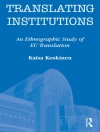The mental representation of language cannot be directly observed but must be inferred and modelled from its effects at second hand. Linguists have traditionally responded to this in two ways, either going for a fairly data-light approach and valuing theoretical creativity, or pursuing just those goals for which data is available and trusting to data-driven descriptive work.
More recently, advances in technology and experimental techniques have made data gathering easier and more accessible, so that a theoretically informed but empirically based approach is rapidly growing in popularity. This synthesis permits linguists to combine the intellectual hypothesis generation of the theoreticians with the ability to deliver hard answers of the empiricist.
This volume is a collection of papers in this direction, using mostly experiment methods to yield insights into syntactic and semantic structures, language processing, and acquisition. Papers report corpus data, neurological investigations, child language studies, and fieldwork from minority languages.
Circa l’autore
Britta Stolterfoht, University of Tübingen, Tübingen, Germany; Sam Featherston, University of Tübingen, Tübingen, Germany.












